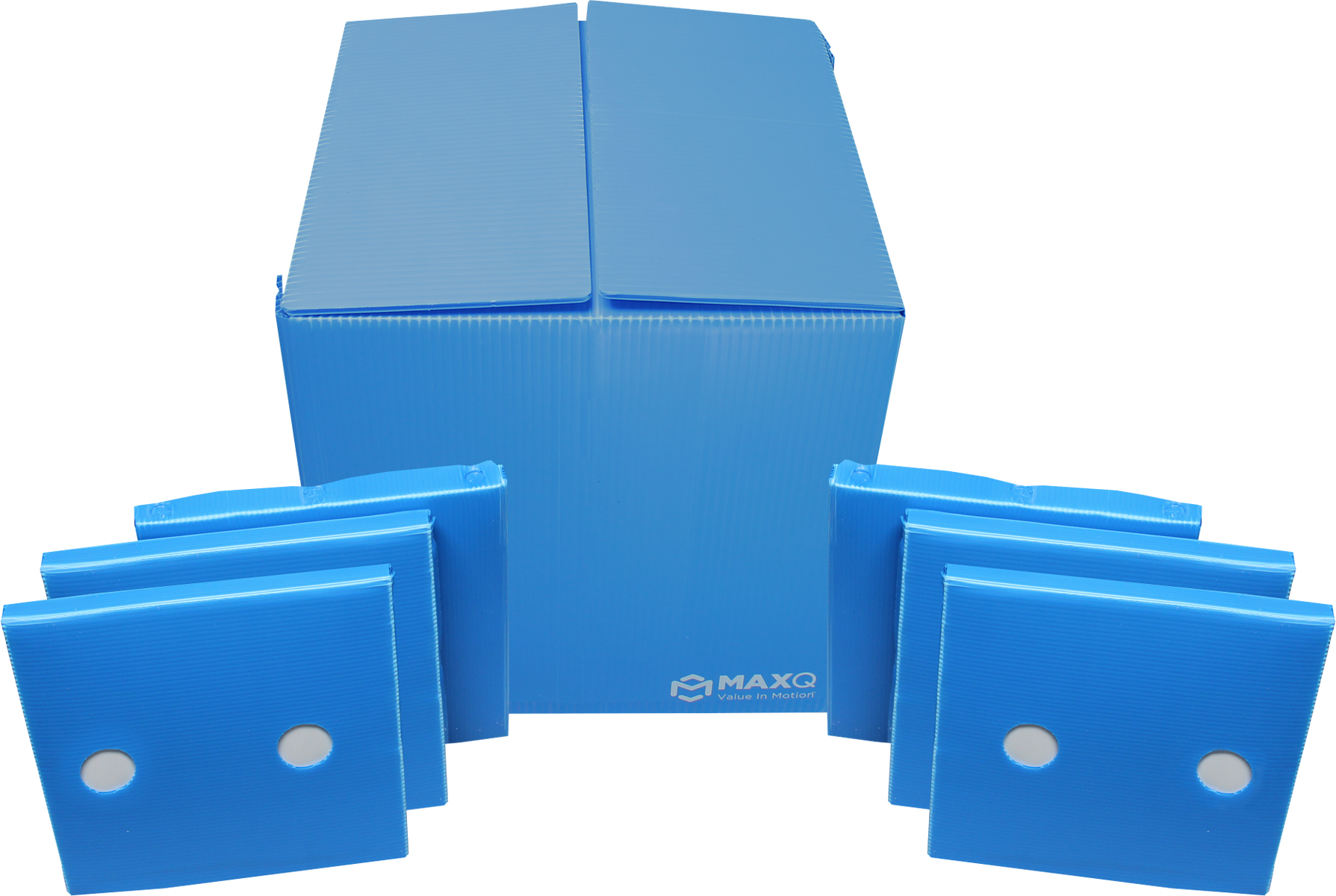MaxOne (Blood) Plasma Shipper eliminates packout, storage, and handling problems of traditional dry ice shipments.
It is no surprise that shipping freshly frozen plasma (FFP < -18°C) is a costly and challenging proposition. The current industry standard Styrofoam and cardboard dry ice plasma shippers are prone to temperature excursions, damage frozen plasma units, require multiple SOPs for seasonal pack-outs, occupy a large amount of storage space, and provide limited reuse. Shipping plasma requires a hefty amount of dry ice per shipment, which results in bulk packaging and higher costs. Not to mention the hazards and specialized training required to handle dry ice. Sublimation of dry ice creates empty space inside the shipper, generating voids that inadvertently increase the chances of the frozen plasma units cracking/breaking due to physical impact during transport. This can lead to up to 40% loss of FFP during shipment, as reported in literature1.

Experience a peace of mind with MaxOne’s consistent and high thermal performance. MaxOne ensures the integrity of your frozen plasma, providing a reliable and secure solution. The MaxOne holds up to 20 plasma units at a time and is prequalified up to 48 hours against ISTA 7D standards.

COVID-19, Convalescent Plasma – Major strain on Plasma distribution
Blood centers and hospitals across the globe are experiencing major challenges in sourcing blood and blood components, such as FFP, because of the current pandemic. One of the most successful weapons in this fight against the pandemic is COVID-19 Convalescent Plasma (CCP), which is collected, stored, and transported similarly to FFP. In the last American Association of Blood Banks survey (conducted Dec. 14-16)2, 82.4% of responding hospitals in the U.S. transferred CCP units in the last few weeks. Nearly 18% of hospitals are reporting delays in obtaining CCP units. With skyrocketing positive COVID-19 cases across the world, the demand for CCP is increasing by the hour. To further complicate the situation, international logistics systems are choked by the COVID-19 vaccine distribution, which also uses significant quantities of dry ice. As demand gets higher, reservation of large aircraft for vaccine distribution and their replacement with smaller aircraft has limited the transport of shipments packed with dry ice. Smaller aircrafts are permitted by the FAA to fly with only 5 lbs. or less of dry ice at a time. Even if there were exceptions, the overall capacity is much lower and results in an inefficient supply chain. Our non-dry ice FFP/CCP shippers aim to restore the efficiency that has been lost.
References
- The need for dried plasma–a national issue. Transfusion, 59(S2): p. 1587-1592. Pusateri, A.E., et al. 2019.
- AABB Releases Findings from 2021 Survey of Hospital Transfusion Services, February 01, 2021.
To find out more about how your blood center or hospital can benefit from MaxQ’s advanced packaging, visit MaxPlus Blood Center Solutions.

